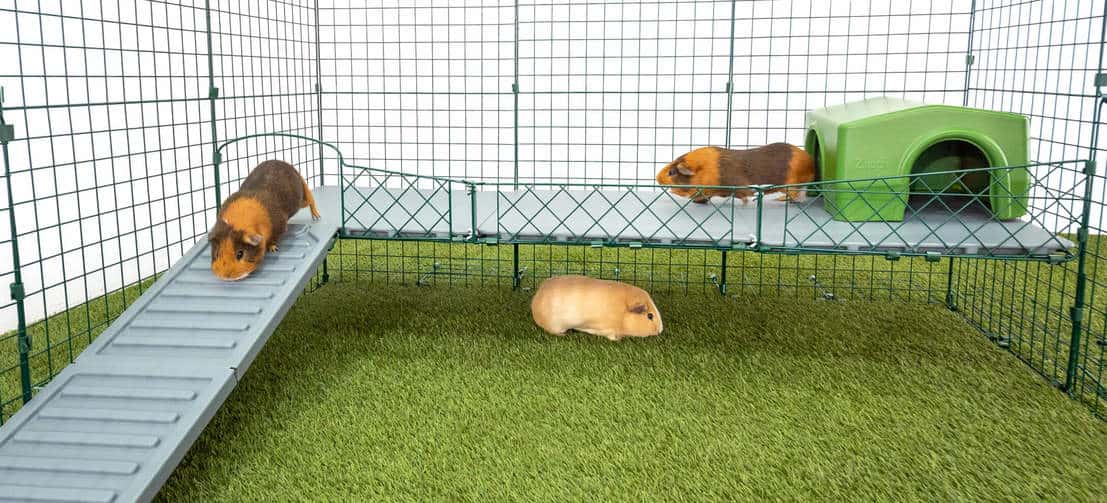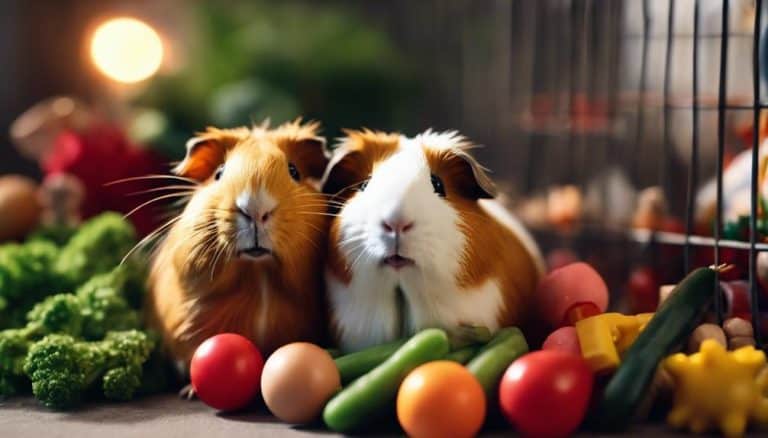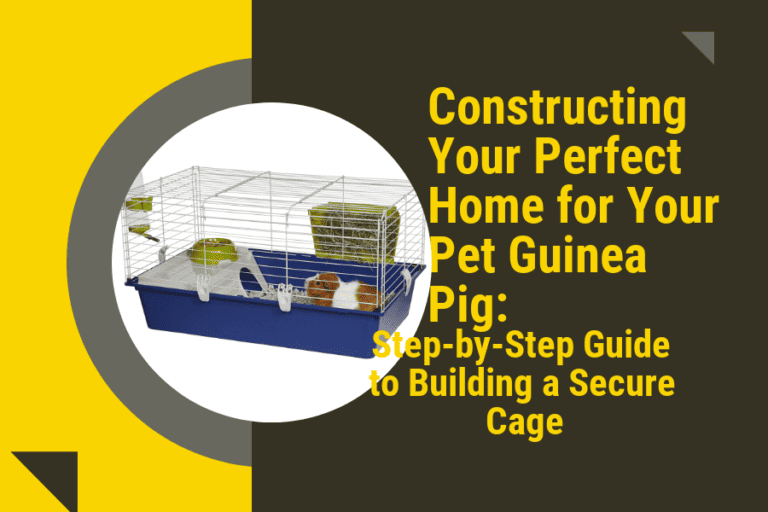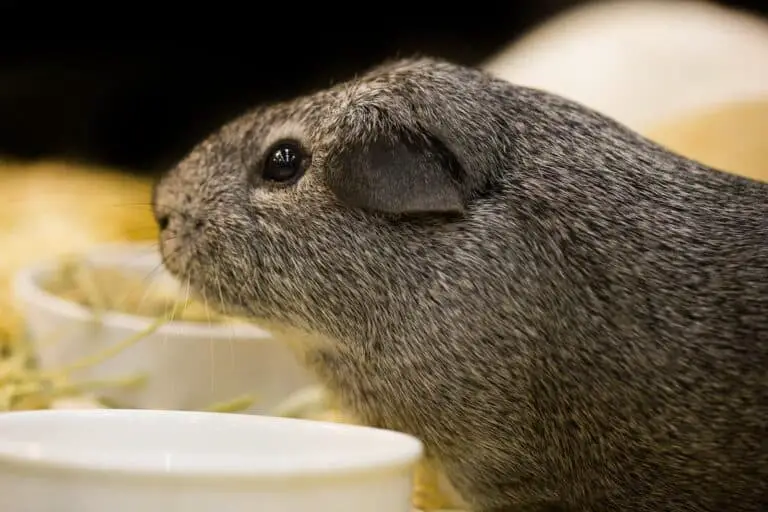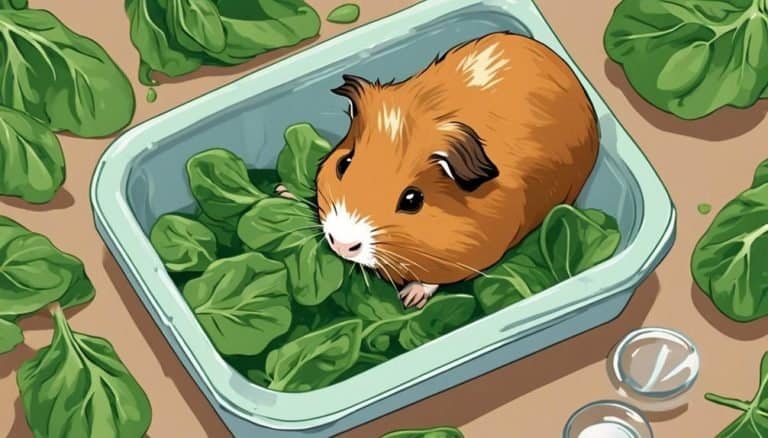The Do’s and Don’ts of Using a Dog Cage for Your Guinea Pig
If you’re a proud owner of a guinea pig or two, chances are you’ve considered different housing options for your furry friends. Guinea pigs need plenty of space to move around and play, and finding the right type of housing can be a challenge. One option that may come to mind is a dog crate, given its availability and accessibility. However, using a dog crate may not be the best choice for housing guinea pigs. Here are some do’s and don’ts to keep in mind before using a dog crate as a guinea pig cage.
What is a Guinea Pig Cage and Can You Use a Dog Crate?
Understanding the Difference Between Guinea Pig and Dog Cages
A guinea pig cage is specifically designed for guinea pigs, taking into consideration their needs and safety. The cage should be large enough for your guinea pig to move around freely and exercise. Guinea pig cages also have a floor covering to provide comfort and protection for their sensitive paws. Dog crates, on the other hand, are primarily designed for dogs and have different dimensions, features, and safety requirements. They may not offer the same level of comfort and protection for your guinea pig as a dedicated guinea pig cage.
Using a Dog Crate as a Guinea Pig Cage
While using a dog crate as a guinea pig cage is possible, it’s important to note that it may not be the best option for your piggy. A dog crate may not provide enough floor space, ventilation, and protection for a guinea pig. Wire grid or cubed crates can also be dangerous for guinea pigs as their feet and legs may get caught in the gaps.
The Pros and Cons of Using a Dog Crate for Guinea Pigs
When it comes to using a dog crate for a guinea pig, there are both pros and cons to consider. One advantage is accessibility, as dog crates are widely available and can be repurposed temporarily. However, using a dog crate can also have drawbacks, such as the lack of adequate space for your guinea pig to move and stretch. The lack of proper ventilation can also lead to respiratory issues, especially since guinea pigs cannot sweat. Additionally, crates may not be designed for the specific needs of guinea pigs and may not have a waterproof base to prevent the accumulation of urine.
Tips for Using a Dog Crate as a Guinea Pig Cage
Choosing the Right Size Crate
If you choose to use a dog crate as a guinea pig cage, it’s important to choose the right size. The minimum space requirement for one guinea pig is 7.5 square feet, while two guinea pigs need at least 10.5 square feet of floor space. Make sure the crate is large enough for your piggy to move around and stretch comfortably.
Using Coroplast to Create a Safe Guinea Pig Habitat
Coroplast is a waterproof material that can be placed at the bottom of the crate to prevent urine from accumulating. It can also be used to create a wider and safer base for your guinea pig. The material is easy to clean and replace, ensuring your piggy has a safe and hygienic environment to live in.
Using a Hutch in Combination with a Dog Crate
If you decide to use a dog crate, consider using it in combination with a hutch. A hutch offers more space and can allow your guinea pig to move around more freely. You can attach the crate to the hutch to provide your piggy with access to a larger space when needed.
Why You Shouldn’t Use a Dog Crate as a Guinea Pig Habitat
Pigs Need Plenty of Room to Move
Using a dog crate can limit the movement and mobility of your guinea pig, leading to boredom, stress, and even obesity. It’s important to provide your guinea pig with plenty of space to move around, play, and exercise. A small and enclosed space can also make your guinea pig feel anxious and unsafe.
The Importance of Proper Bedding for Guinea Pigs
Guinea pigs need proper bedding to ensure their comfort and hygiene. They have very sensitive respiratory systems and paws, and the wrong bedding can lead to respiratory issues, skin irritation, and infections. Dog crates may not provide the same level of comfort and protection as a dedicated guinea pig cage. Guinea pig bedding should be absorbent, dust-free, and easy to clean.
The Dangers of Using Wire Grids or Cubes as Guinea Pig Housing
If you’re using a wire grid or cube dog crate, be aware that they can pose a serious risk to your guinea pig. Guinea pigs’ feet and toes can get caught in the bars, leading to injuries and even amputations. Wire grids or cubes may also cause bumblefoot, a painful condition that affects guinea pigs’ feet.
The Best Options for Guinea Pig Housing
Using a Properly-Sized Guinea Pig Cage
The best housing option for guinea pigs is a properly-sized guinea pig cage. Guinea pig cages should be at least 7.5 square feet for one piggy and 10.5 square feet for two. A c&c cage (cage frame made of cubes and coroplast) is a popular choice among guinea pig owners as it can be customized to the size and needs of your piggy. The cage should have plenty of space for your guinea pig to move, play, and exercise safely. Multi-level cages can also be a great option to provide more space for your piggy and prevent boredom.
The Benefits of Fleece Bedding for Guinea Pigs
Fleece bedding has become a popular option for guinea pig owners as it is soft, absorbent, and easy to wash. It can also reduce the amount of dust in the cage and prevent irritation. Fleece bedding should be changed and washed regularly to ensure the hygiene and comfort of your piggy.
Making a Guinea Pig Habitat from a Storage Cube
If you’re on a budget, consider making a guinea pig habitat from a storage cube. Storage cubes can be easily assembled and customized to create a safe and comfortable environment for your guinea pig. They are also affordable and can provide a large amount of space for your piggy.
Caring for Your Furry Friend
The Importance of Regular Cleanings
Keeping your piggy’s cage clean is essential for their health and wellbeing. The cage should be cleaned regularly, and bedding should be changed at least once a week. You should also remove any uneaten food or vegetables that have been sitting in the cage for too long as it can attract pests and affect the hygiene of the cage.
Providing Plenty of Fresh Food and Water
Guinea pigs need a diet rich in vitamin C, fiber, and nutrients. Fresh hay, vegetables, and fruits should be offered daily. You should also ensure that your piggy has plenty of fresh water available at all times. Water bottles should be checked and cleaned regularly.
The Benefits of Having a Furry Companion
Guinea pigs are social animals and thrive in the company of other guinea pigs. If you have only one piggy, consider getting a companion for them to prevent loneliness and boredom. Guinea pigs are also great pets for children and can provide a rewarding and loving experience for the whole family.

